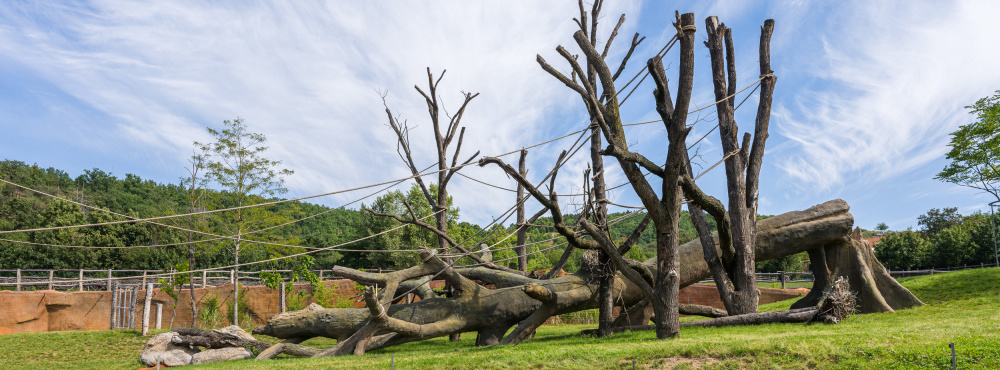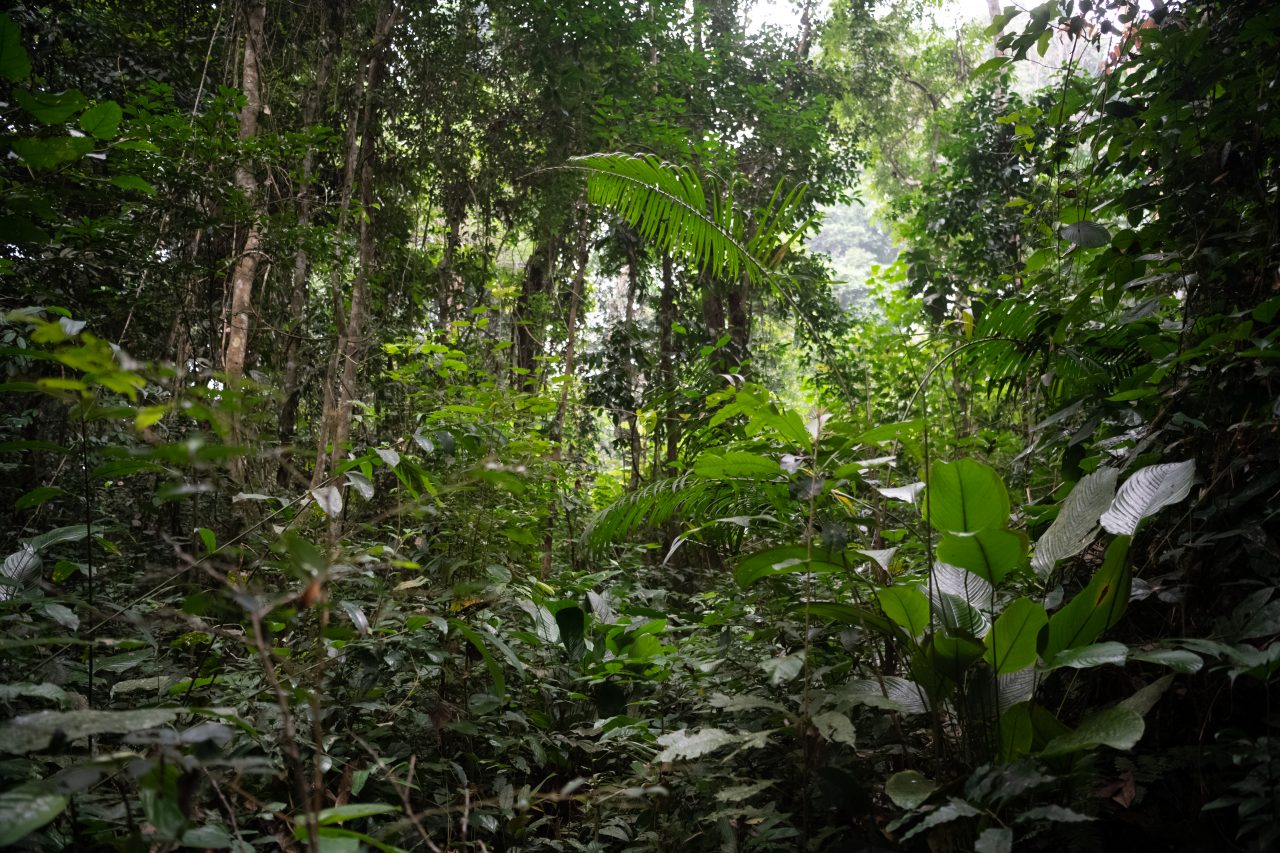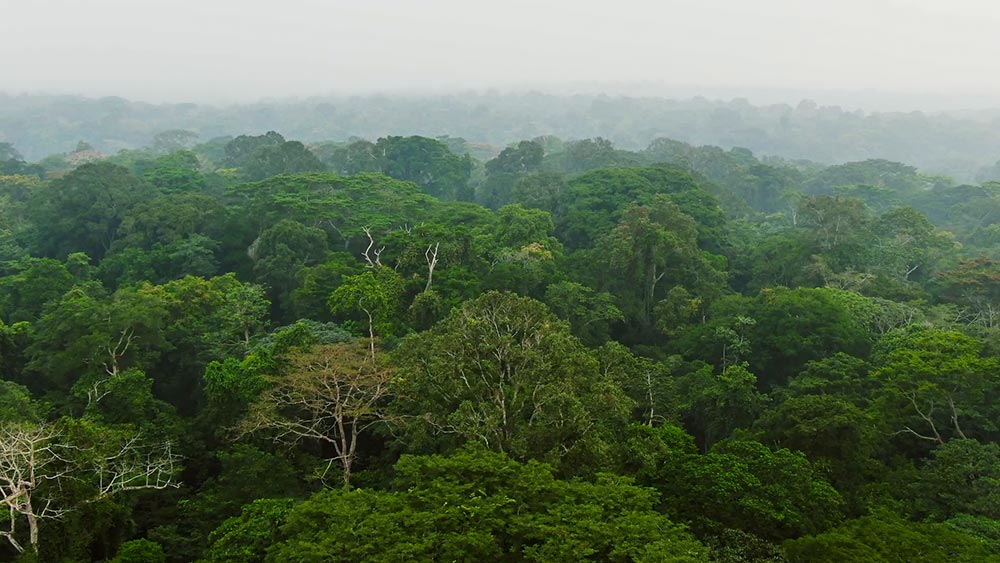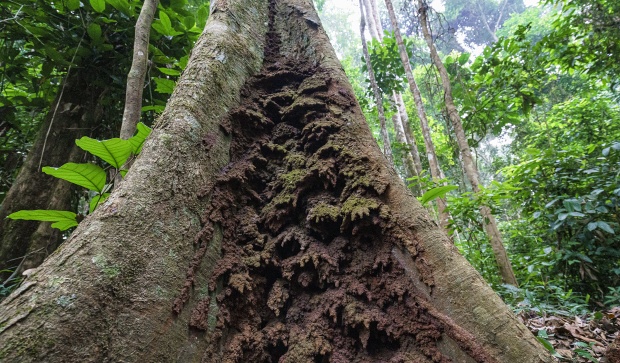Rainforest richness

Tropical rainforests are characterised by a high level of biodiversity, i.e. the sheer number and variety of species. In this regard, they represent the richest environment on our planet.

Photo: Khalil Baalbaki
According to scientific estimates, 40–75 % of all biological species occur here. Moreover, many plants and animals of the African rainforest are found nowhere else on Earth. These endemic species are indispensable members of unique ecosystems built on complex interspecies interactions.
Forest Cultivation
High humidity, a warm climate and year-round sunshine create ideal conditions for the growth of many plant species, which in turn provide forest dwellers with food, living space and shelter. The pillars of the ecosystem are tall trees, on which a wide range of both small and large animals depend. Many of these animals “give something back” by helping the forest grow: 70–90 % of tree species in tropical forests rely on animals for seed dispersal. Termites—along with fungi and bacteria—enable nutrient cycling and enrich the poor soil from which the trees grow.

Photo: David Rauch
Stratification of the tropical rainforest
At different heights above the ground, the composition of vegetation in the forest varies, forming what are known as layers—or strata—such as the tree layer or the shrub layer. In tropical rainforests, these layers are more numerous and complex, and entire communities of animals are closely tied to them. Not only birds, but also many mammals, reptiles, and even amphibians spend most of their lives high up in the treetops, rarely descending to the lower layers. Lianas act like hanging bridges, allowing animals to move from tree to tree without having to climb down to the ground and leave the canopy layer.

Photo: Khalil Baalbaki
The main giveaway for the presence of termites in the rainforest is the number of their nests of varying shapes and sizes. Together with other invertebrates, they decompose dead plant material, whilst producing nutrients that enrich the infertile red soil, which can then support the growth of huge trees.
Forest Clearings
Forest clearings, known in central Africa as bais, form in places where trees struggle to grow over long periods—whether due to rocky subsoil, salt-saturated ground, or excessive waterlogging. These open areas are often sought out by forest animals, which come to replenish minerals, wallow in the mud, or feed on plants that do not grow in the surrounding forest.

Photo: Jocelyn Aubery Ewane
ZOOPRAHA.CZ
Contacts
- The Prague zoological garden
U Trojskeho zamku 120/3
171 00 Praha 7
Phone.: (+420) 296 112 230 (public relations department)
e-mail: zoopraha@zoopraha.cz
Others










